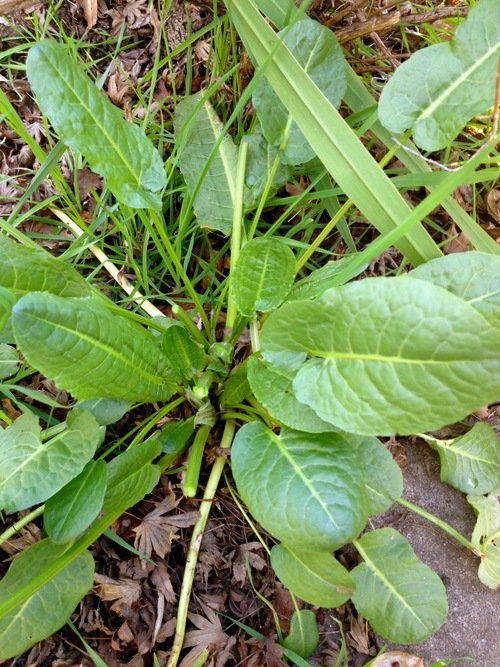Dock: Come for the leaves, stay for the seeds
Rumex crispus, or "curly dock" leaf and seeds.
Young dock leaves.
Dock, or Rumex spp. is so ubiquitous on the West Coast in the spring and summer that even if you aren't looking for it, you have probably seen it. Dock has lance-shaped, elliptical leaves that start out small and tender, but can grow quite large and tough and begin to turn yellow and/or red as they age. The two most common varieties are curly dock, Rumex crispus (pictured in this post, also known as yellow dock), and broad-leafed dock, which have characteristics that befit their names.
The leaves have a lemony taste to them that works well in a salad when they're small and tender, but are better wilted or sautéed when older and tougher. Try topping a bed of dock leaves with warm gnocchi or freshly grilled meat or adding a handful of dock leaves to a soup. A member of the buckwheat family, Polygonacaae, the seeds are similar to buckwheat seeds but not as hard. When toasted, the seeds have a slightly tart-nutty flavor similar to rye, look kind of like ants (really), and can be used in everything from granola to crackers (what I like to call, Rumex crisps) to a more realistic "ants on a log".
Dock likes to grow in urban environments - think empty lots, next to sidewalks, etc. The leaves can be found in the spring and they start to go to seed in the early summer. Even if you find dock that has gone to seed, doesn't mean that there aren't young plants still out there - the seeds will appear earlier for plants that have more sun exposure. You can eat the seeds raw, but they're much better toasted (in my opinion). Here's a recipe for toasting the seeds.
Run fingers down stem to pull off seeds. You may need to run fingers down separate smaller stems if seeds do not come off immediately.
Heat cast iron to medium-high. Add seeds and, stirring frequently, toast until they brown and give off a nutty smell, about 10 minutes. Only add seeds so that they are less than 1/4-inch up the side of the cast iron pan or less.
You are now ready to eat the seeds as a snack or use them in a recipe, such as Rumex Crisps, dock seed crackers.
Dock leaves and seeds in an array of other wild edible plants - can you find the it?



